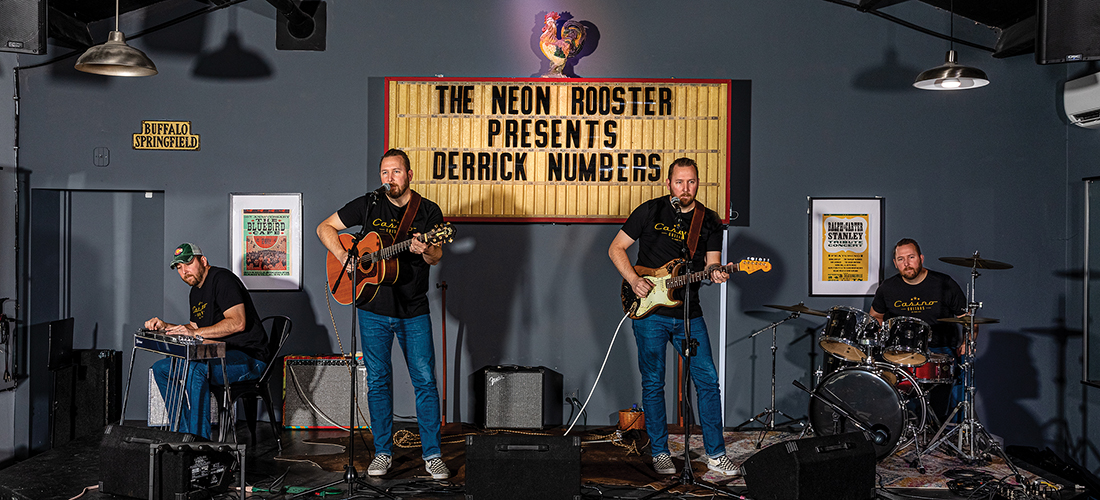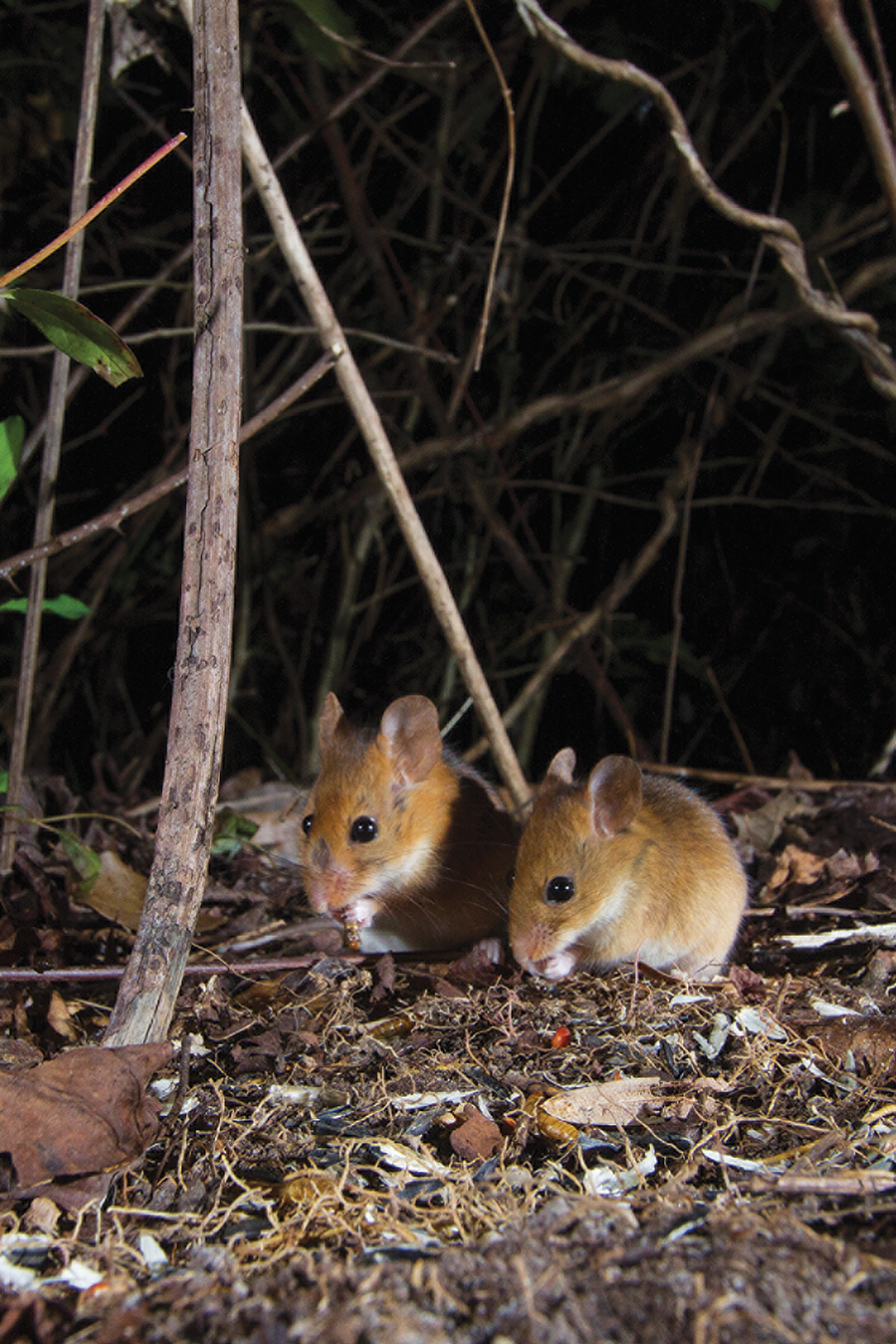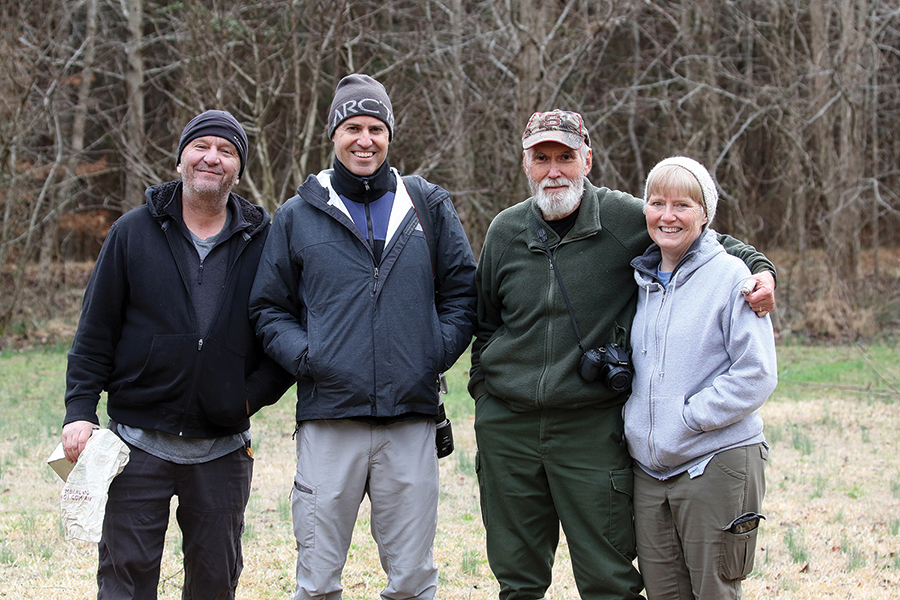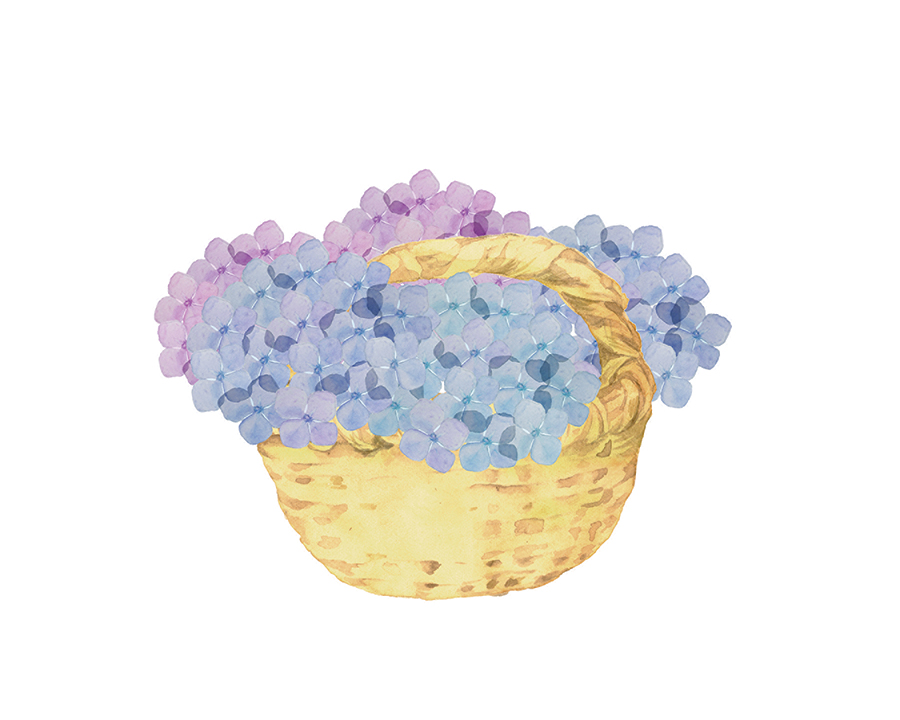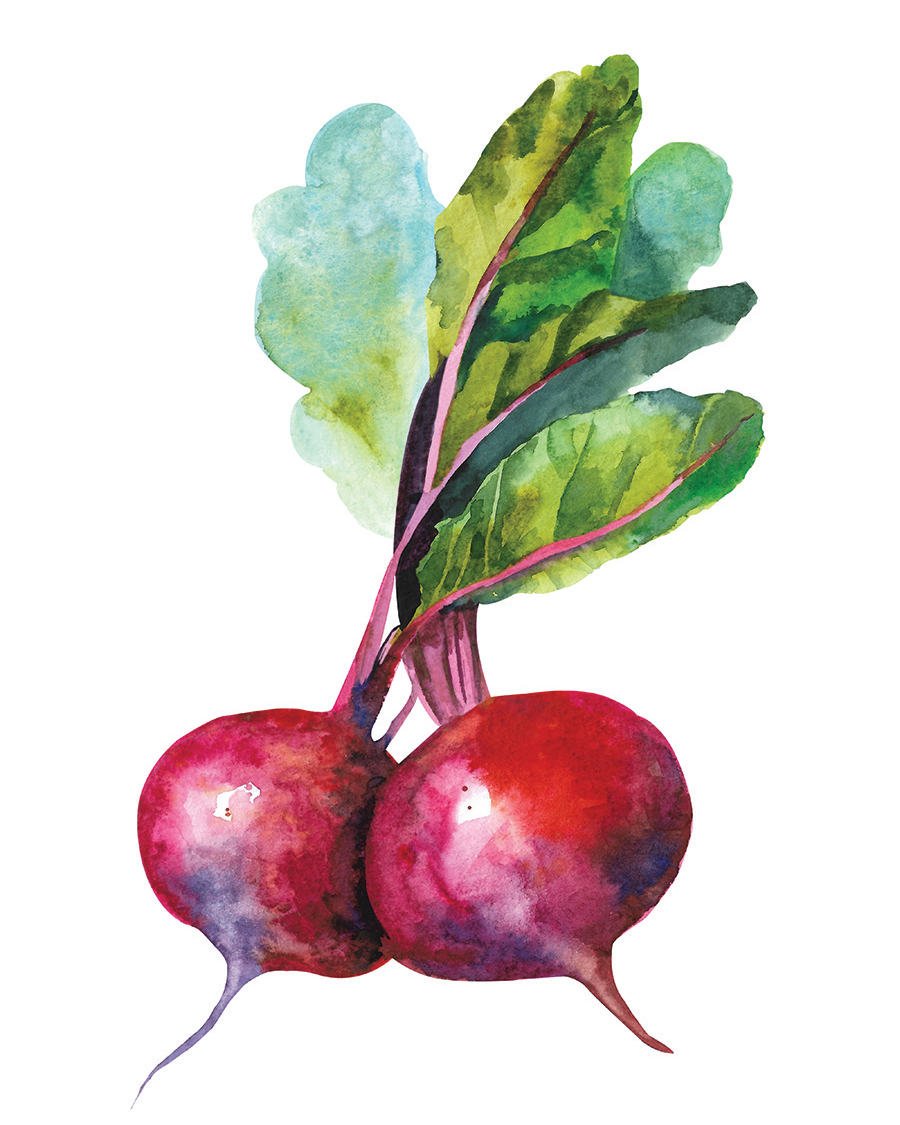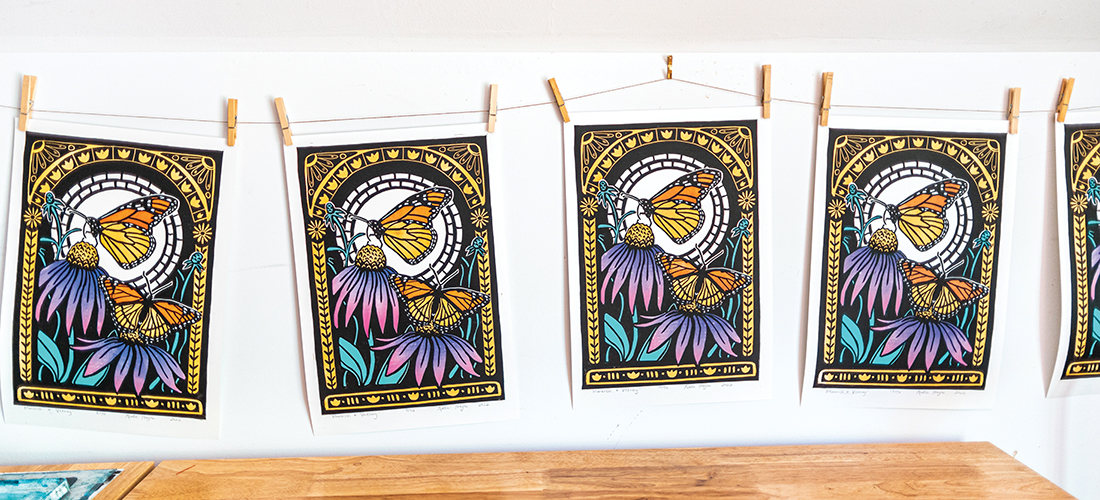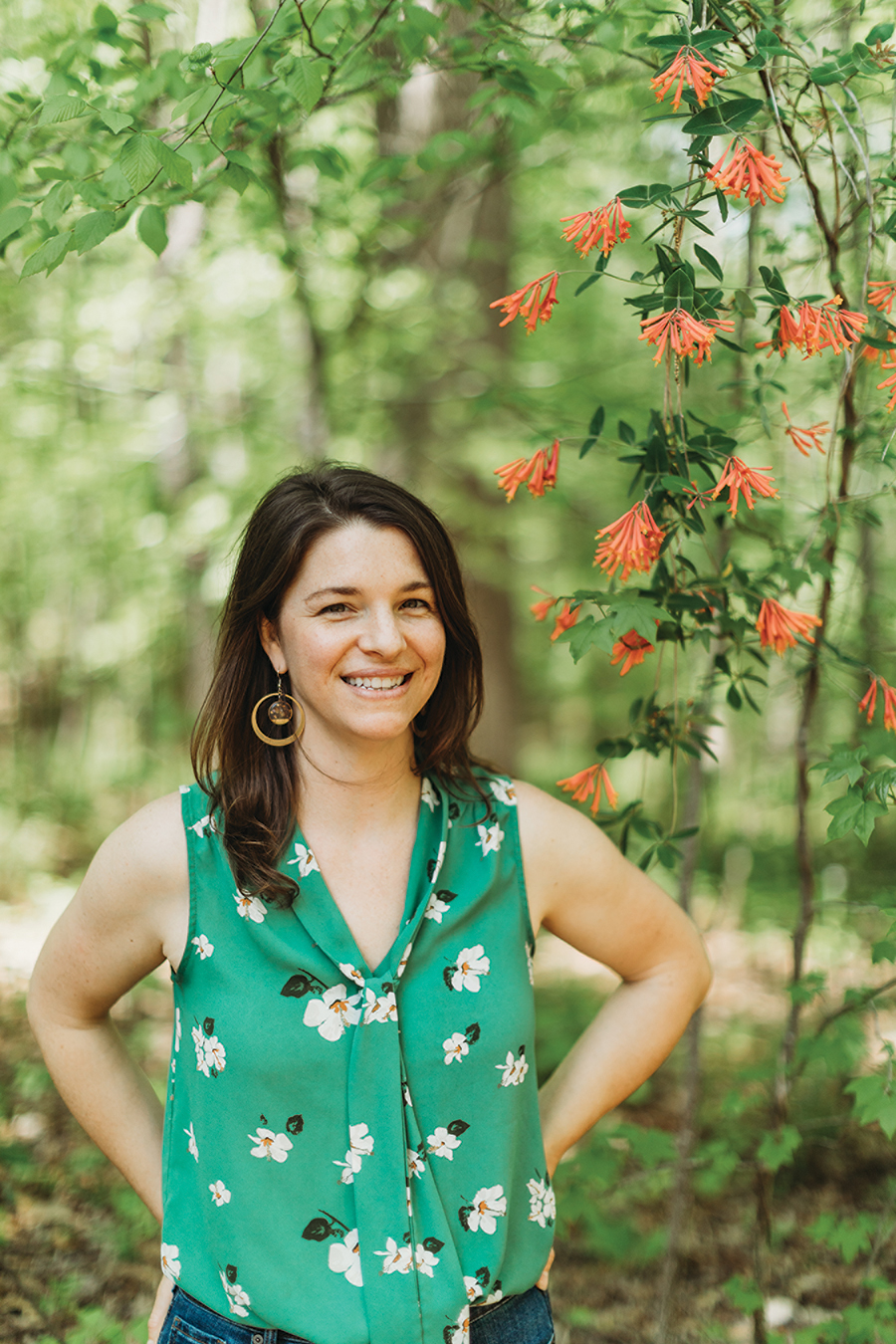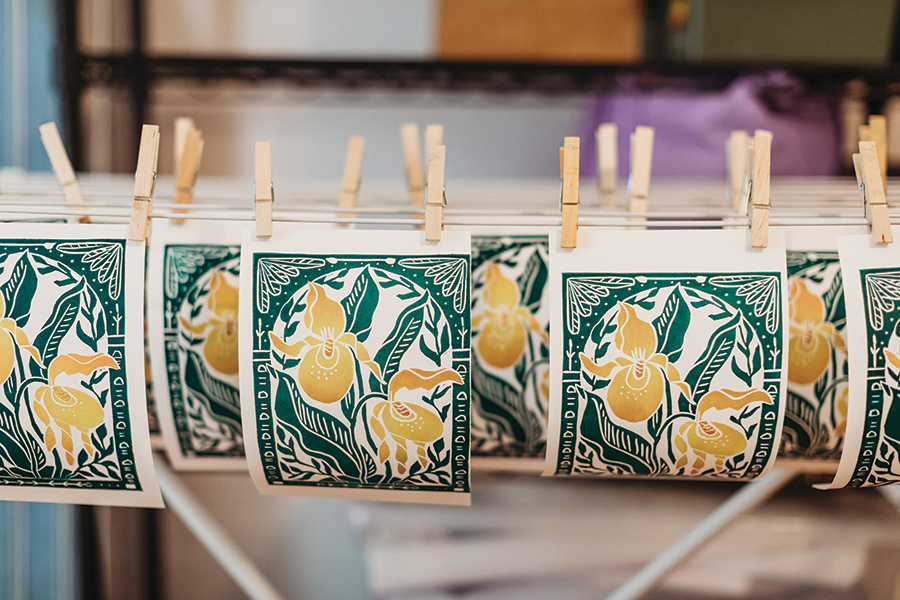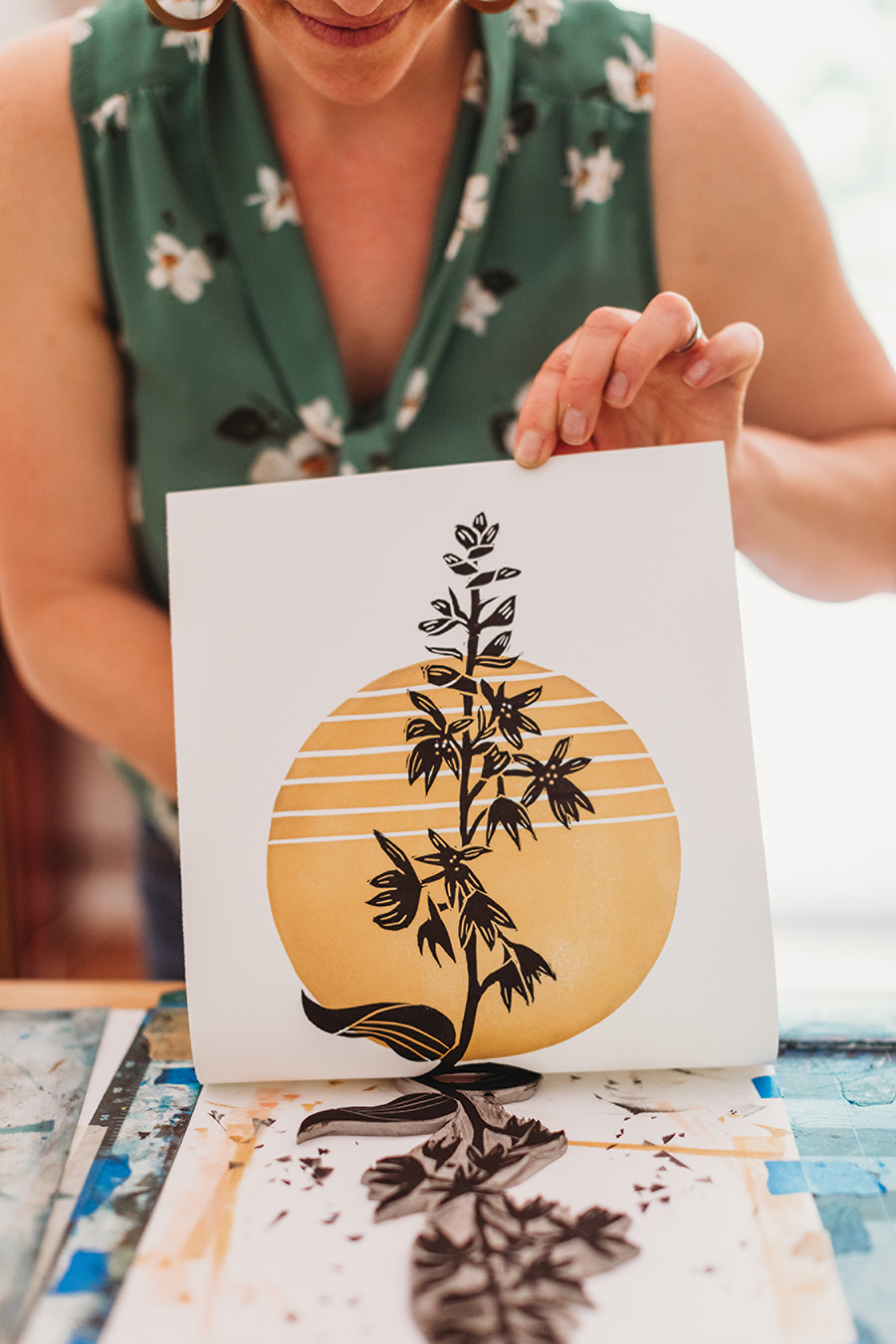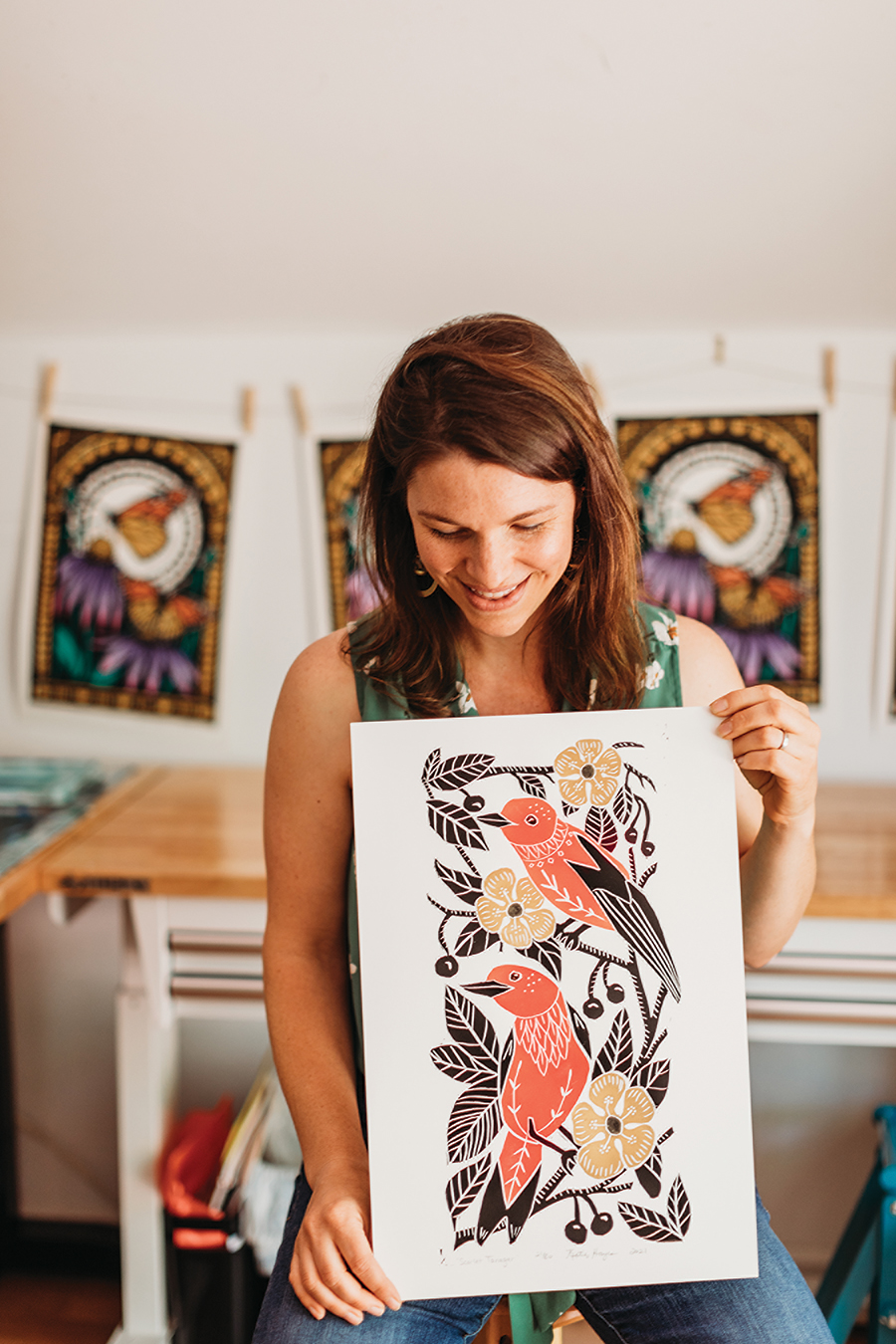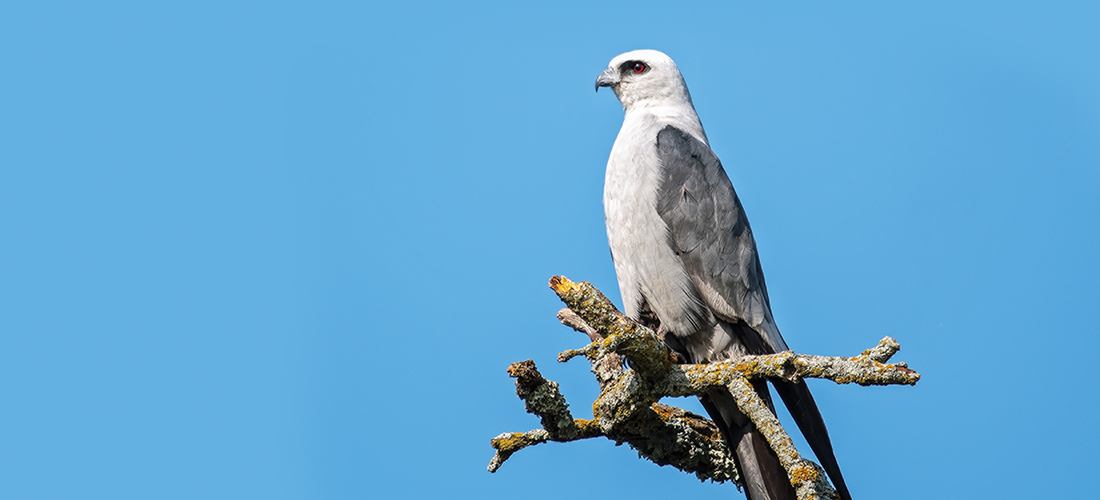Lit Up like NEON
Nashville comes to Aberdeen
By Jenna Biter
“This is a listening room,” Derrick Numbers pleads into the mic, fully aware the roomful of music and alcohol enthusiasts won’t long maintain library etiquette. Weekend after weekend, his plea fails, but he doesn’t really seem to mind. “You guys are in for a special treat: All the way from Cincinnati, Ohio, we have Matt Waters and the Recipe!”
The crowd whoops, claps, and whistles. Inside voices, be gone.
A dark-haired mop in a black leather jacket with 6-inch arm fringe flashes a cool side-smile. “No, y’all, this is a treat for us. Sincerely, to come down to such a beautiful venue,” says Waters, eyeing the room. “Y’all have no idea who we are, but you’re giving us a chance to enhance your Friday night with a little shakin’ music.” He paws his cherry red electric guitar, snarls a groovy tune and pumps his legs like he’s playing charades, and elliptical is the answer.
Waters is onto something. “I wanted to be a music matchmaker,” Numbers says, divulging his motive for opening his Aberdeen music venue, the Neon Rooster, after purchasing what had been The Rooster’s Wife. “I want to introduce people to artists they’ve never heard of . . . ” he pauses and grins “ . . . and sometimes it’s a blind date.”
Waters squiggles across stage the way a 4-year-old scribbles on a white living room wall, with a little mischief. “This next one’s special. It’s about the most inappropriate type of people watching there is: We dedicate this song to hot strangers.” The frontman plucks a ditty that can only be described as the love child of funk and reggae. “Oh, pretty mama, I like the way you’re reading that book . . . ”
In the crowd, a baby boomer in a duckbill hat and the only other fringed jacket in sight taps his foot, and a bleary-eyed blonde dances in her chair with hands above her head. Posters for Nashville’s Bluebird Café decorate the Neon Rooster’s walls and do a little people watching of their own.
“It used to be this secret that people kind of knew about,” Numbers says of the Bluebird. It’s still a hole-in-the-wall, but the hit soap series Nashville “took it to the stratosphere. It may be only slightly bigger than our place, but all the best songwriters have played there.”
Numbers laughs at the lineage. “I don’t think I could ever be the next Bluebird.” His son, Logan, zips by balancing a stack of beer glasses and empty Coke cans. “I want this to be a place where people know they can find good music that also provides a place for new and upcoming bands to play.”
Bearded out and capped in a “Winston Cup Series” trucker hat, Addison Johnson, whose latest album debuted third on the iTunes country charts (behind Morgan Wallen and Willie Nelson), recently played the Neon Rooster. Just a man and his guitar.
People fidgeted in their seats. This guy and his guitar for two hours? But Johnson’s storytelling lived up to his Jim Croce T-shirt. “I looove talking to radio hosts about this one,” he says. “It’s a song about a man who steals a Chevelle to sell fake drugs to the mob down in New Orleans.” He twangs, “Yeah, that pound of white powder was a pound of white flour. Those Italians were looking for me.”
Johnson, a North Carolina native, worked through a Rolodex of old and new songs with lyrics that could outgun punchlines — apparently, he burned his ex’s stuff in a neighborhood bonfire; other songs ended in a cop chase or jail time; and Darth Vader and Neil Armstrong tag-teamed cameos in a psychoactive trip at a Woodstock-lite music festival.
By the 10 o’clock close, the evening’s skeptics were full-blown believers, buying T-shirts from the merch stand and hooting for an encore. Numbers makes a promise: “Whether you like country music, whether you like rock ’n’ roll, you’ll be able to enjoy any of our artists — we don’t book duds.” PS
Jenna Biter is a writer, entrepreneur and military wife in the Sandhills. She can be reached at jennabiter@protonmail.com.

